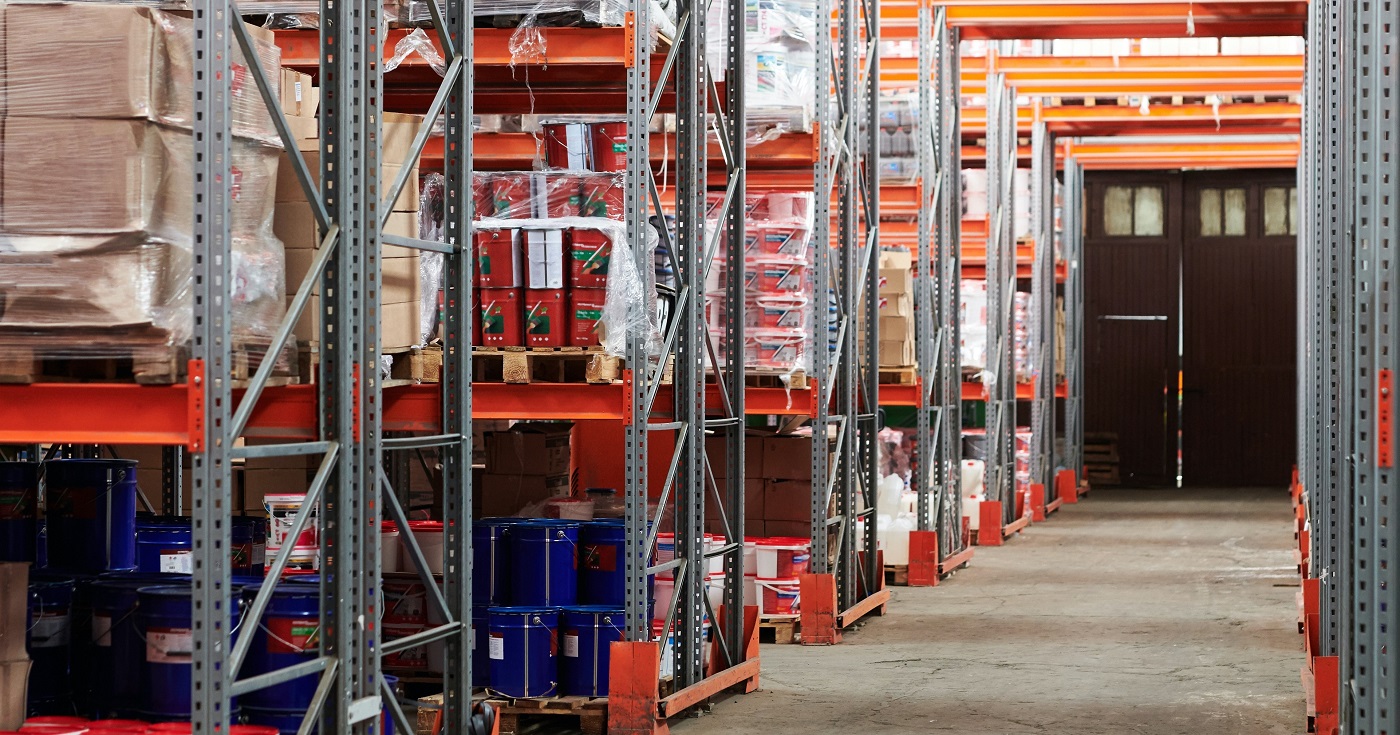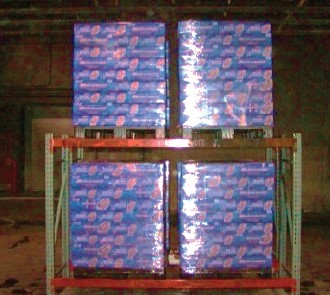
The Challenge
SITUATION #1: PLASTIC PALLETS USED WITH CLASS 1 COMMODITY

The Solution
Given that the product in question was bottled beer, the question was raised as to the whether or not a two class upgrade would be necessary. Particularly, since all of the testing completed for determination of the required two class upgrade was conducted with a standard Class II Commodity package. TEC conducted a commodity classification test.
The Outcome
The results of the commodity classification test demonstrated that the packaged array of bottled beer on plastic pallets would not result in a commodity classification of higher than the original designation of a Class I Commodity. This allowed for the introduction of the plastic pallets into the warehouse operation with zero cost required for upgrade of the sprinkler system.
The Challenge
SITUATION #2: ELECTRIC SHAVER

The Solution
A review of the percentage by weight and volume clearly indicated that the product was a Group A Plastic; however, concern was expressed as to what further impact the alcohol packs would have on the overall classification. TEC conducted a commodity classification test.
The Outcome
The results of commodity classification testing demonstrated that the packaged array of shavers and alcohol packs had a characteristic burning rate under water application of not more than that of a standard Cartoned Unexpanded Group A Plastic. The outer packaging and air space between the inter and outer package allowed for delay of the involvement of the internal plastic packaging and the alcohol pack for sufficient time to allow for operation of the water discharge and control of the developing fire similar to a Cartoned Unexpanded Group A Plastic. This allowed for the introduction of the electric shavers into the main distribution channel warehouse and elimination of significant cost associated with off-site storage within a separate leased facility.
The Challenge
SITUATION #3: OUTDOOR PILLOWS/CUSHIONS

Classification of this product typically resulted in consideration as an Expanded Exposed Group A Plastic to ensure adequacy of the selected sprinkler protection. As a result, the protection for these products consisted of ESFR type sprinkler protection based upon the provisions of the FM Data Sheet 8-9. Unfortunately, this then resulted in a significant impact upon the number of fire pumps being required to achieve such a level of protection.
The Solution
Analysis of a representative sample of the various types and densities of materials was conducted using bench scale calorimetry (ASTM E1354-04) to assess physical properties. These physical properties, time to ignition, mass loss, heat of combustion, and peak release rate were identified and compared to known properties associated with expanded polystyrene meat trays (standard Expanded Group A test commodity). Following bench scale testing, intermediate scale testing consisting of free burn application of two (side-by-side) open wire mesh bins—internal dimensions 46 in. x 38 in. x 36 in.—of each product beneath the cone calorimeter was conducted to assess the potential for conducting a commodity classification test for a larger 2 x 2 x 2 array. This was followed by a mock scale test with a representative storage array to that proposed was selected for testing with the proposed application of water from a variety of sprinkler types and operating pressures to assess not only the burning rate of the products but also the reaction to applied sprinkler discharge. This prompted the pursuit of a series of full-scale fire tests to demonstrate actual performance of an installed sprinkler design with a full-scale array of stored products.
The Outcome
The results of the testing demonstrated that protection of the proposed storage could be achieved with a significant reduction in overall operating pressure for the installed ESFR sprinklers. As a result the number of required fire pumps reduced by more than 80 resulting in a substantial saving far exceeding the cost of the testing required to develop the proposed protection criteria and defining the commodity hazard and proving adequate protection criteria.
About Telgian Engineering & Consulting, LLC
Telgian Engineering & Consulting LLC (TEC) is a full-service global engineering and risk mitigation consultancy which specializes in complex, multi-discipline public and private sector projects. TEC provides professional services related to the protection of people, property, information, and organizational mission against preventable losses.
TEC is a provider of strategic/enterprise risk management, fire protection engineering, environmental health and safety, emergency management, operations continuity consulting, and construction administration services.
Our professionals are dedicated to delivering value through effective protection solutions that meet today’s risk challenges. In addition to a uniquely global perspective, we also provide in-depth knowledge of local, state, and federal compliance matters. Since 1985, Telgian has worked hand-in-hand with clients such as architects, engineers, owners, developers, risk and facility management firms, construction teams and government agencies.
For teaming opportunities or information regarding correctly identifying commodity classification, performance based fire testing, full-scale fire testing or retrofit of existing buildings, as well as a wide range of engineering and risk mitigation solutions, contact Telgian Engineering & Consulting at TEC@telgian.com. or give us a call at 1.302.300.1400.